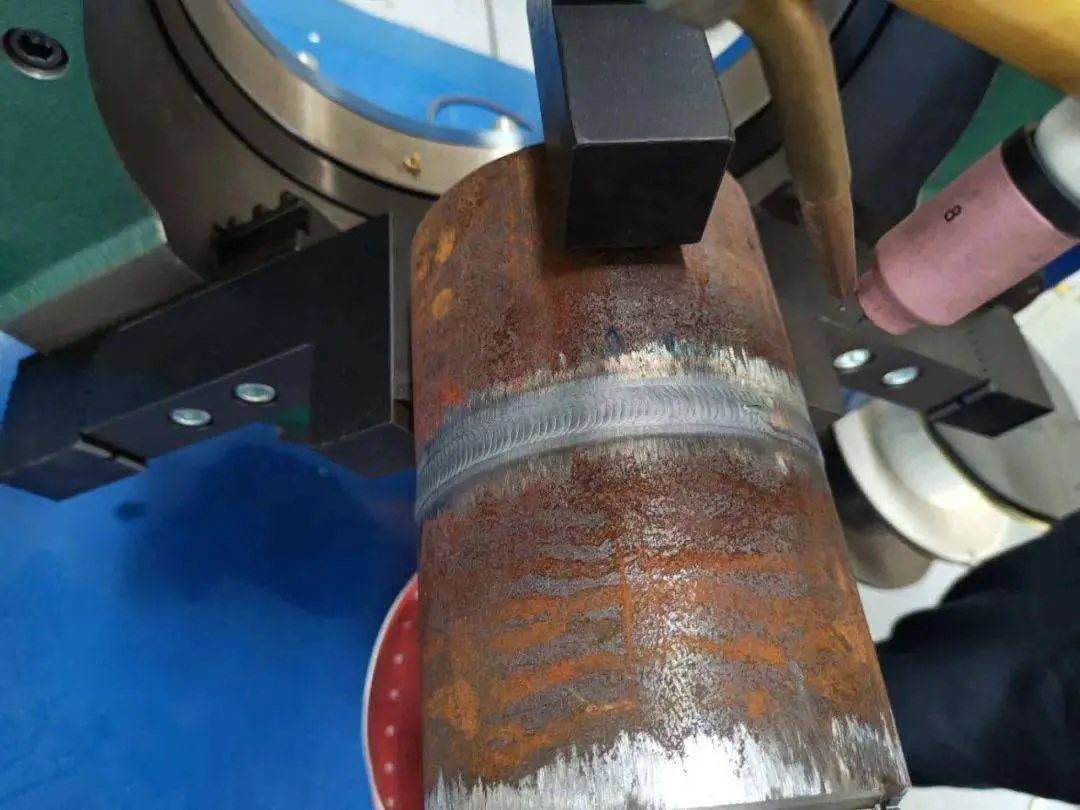As it is a high-strength structural welding steel, the carbon content of this type of steel is limited to a low level.
Generally, the mass fraction of carbon is less than 0.18%, and weldability requirements are also considered in the design of the alloy composition.
Therefore, welding of low-carbon quenched and tempered steel is basically similar to that of normalized steel.

The following problems mainly occur during welding:
① Hot cracks in the weld and liquefaction cracks in the heat-affected zone.
Low carbon quenched and tempered steel generally has low carbon content, high manganese content and strict control over S and P, so the tendency to hot cracking is small.
However, high-strength steel of low nickel and manganese type will increase the tendency of hot cracking and liquefaction cracking.
② Cold cracks.
As this type of steel contains more alloying elements that can improve hardenability, it has a great tendency to cold crack.
However, due to the high Ms point of this type of steel, if the joint can be cooled slowly to this temperature, the martensite generated can be subjected to a “self-tempering” treatment, which reduces to a certain extent the tendency for cracking to occur. cold, therefore, the tendency to cold cracking is not necessarily great.
③ Reheat the cracks.
Low carbon quenched and tempered steel contains strong carbide-forming elements such as V, Mo, Nb, Cr, etc., so it has a certain tendency to reheat cracks.
④ The heat-affected area is softened.
Softening occurs in the area from the original tempering temperature of the base metal to Ac1 during welding.
The lower the original tempering temperature, the wider the softening range and the more severe the degree of softening.
⑤ Fragility of the heat-affected area.
If low-carbon martensite and bainite with volume fraction of 10% to 30% are produced in the superheat zone, high toughness can be obtained.
However, when the cooling rate is too fast, low-carbon martensite with a volume fraction of 100% is formed and the toughness will decrease;
When the cooling rate is too slow, on the one hand, the grains will become coarse, on the other hand, the mixed structure of martensite and low-carbon bainite plus MA components will be generated in the superheating zone, which will cause more serious embrittlement in the zone. of overheating.
When welding quenched and tempered steel with σs ≥ 980MPa, welding methods such as argon tungsten arc welding or electron beam welding should be used.
For low carbon quenched and tempered steel with σs <980MPa, it can be used for shielded metal arc welding, automatic submerged arc welding, gas metal arc welding and argon tungsten arc welding.
But for steels with σs ≥ 686MPa, gas metal arc welding is the most appropriate automatic welding process.
In addition, if welding methods with large heat input and low cooling rate, such as multi-wire submerged arc welding and electroslag welding, are to be adopted, post-welding quenching and tempering treatment must be carried out.
When the heat input is increased to the maximum allowable value and cracking cannot be avoided, preheating measures must be taken.
For low-carbon quenched and tempered steel, the purpose of preheating is mainly to prevent cold cracking, and preheating may have adverse effects on toughness, so generally lower preheating temperature (≤200℃) is used when welding quenched and tempered low carbon steel.
Preheating is mainly expected to reduce the cooling rate during martensite transformation and improve crack resistance through self-tempering of martensite.
When the preheating temperature is too high, it is not necessary to avoid cold, but this will make the cooling rate of 800-500 ℃ lower than the critical cooling rate for brittle composite structures and will cause the heat-affected zone appears to be obviously weakened.
Therefore, it is necessary to avoid blindly increasing the preheating temperature, including the interpass temperature.
Low-carbon quenched and tempered steel is generally not subjected to heat treatment after welding.
Therefore, when selecting welding materials, it is necessary that the weld metal obtained has mechanical properties close to those of the base metal in the welded state.
In special cases, such as the high rigidity of the structure and the difficulty of avoiding cold cracks, materials with slightly lower strength than the base metal must be selected as filler metal.

























































